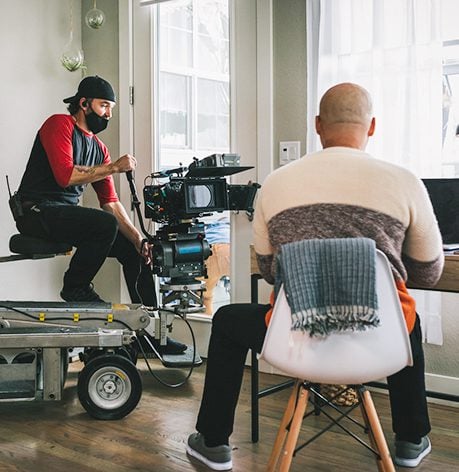Educational videos need to be more than recorded lectures to engage students. Still, video production seems easy. All the faculty needs is a camera and their lecture notes, right? No, compelling videos can make or break a course’s effectiveness. Read on for the best steps to focus on when creating videos for college courses when using video production services.
Use Video Production Services to Design With Intent
Yes, video production has become essential in the instructional designers’ tool kit. Video lets educators flip, blend, and deliver online classes in new ways. But, without intentional design, colleges risk students abandoning the course. Besides that, poorly produced videos can mar the institution’s reputation. Who wants to pay for a school that delivers low-quality instruction? So, to get the best out of video production services, content creators must consider more than the subject. Leaders can guide faculty toward expert IDs to plan out what information to include and leave out.
Create Videos That Manage the Cognitive Load
So, video is often the primary delivery instructional method in courses. Likewise, video works in various classes, from traditional to blended to virtual. But, IDs know how to get the most out of educational video production services. Brame (2015, para. 5) discusses how the Cognitive Theory of Multimedia Learning leverages both channels of students’ working memory. Good videos give learners information on the visual/pictorial and auditory/verbal channels. Together, both channels maximize a learner’s working memory. Learning transfer occurs. But, either channel can be easily overwhelmed—too much content results in a high cognitive load. Too much information too fast loses students. Most importantly, pros edit content so students can focus on key learning objectives. Extra scenes of animation, background details, and music increase a student’s cognitive load, making learning difficult rather than engaging.
Use Video Production Services to Maximize Student Engagement
Likewise, viewing videos is a passive activity unless IDs understand how and when to push learners to interact. Professionals use the best instructional practices to make content easy-to-follow for students. For example, content chunks need to be between 7-10 minutes. Long lectures shot inside a dim lecture hall result in course abandonment rather than knowledge transfer. Also, IDs use proven instructional methods such as cueing and signaling to emphasize important content for learners. Seasoned pros understand their audience. Besides that, IDs know how to manage this intrinsic load in their video production. Tools like needs assessment identify what the learner is bringing into the course. So, an advanced course and a beginning course build from each other to promote active learning.
Effective Video Production Services Help Promote Active Learning
Still, video remains a passive experience unless IDs integrate active learning from the start. Designers prompt learners to make comparisons, analyze, and include activities. Content creators reduce the extraneous load – any content that does not move the learning toward the desired learning goal. Likewise, IDs have a complete video production tool kit at their fingertips. On-screen text, symbols, and keywords highlight significant content. Color codes, contrast, and directional arrows remain consistent across all content. Students experience consistent format, branding, and content organization across courses. The audio matches the visual graphic. These little things reduce the extraneous load and maximize the germane load, so knowledge transfer occurs.
Video Production Services Should Be Consistent
Yes, faculty can use these instructional techniques in their video production. However, individual course creators tend to make their videos their way. Schools end up with many videos at inconsistent levels of quality. All videos reflect the institution. So, investing in a video production service pays off in a multitude of ways:
- students get high-quality videos that facilitate their learning
- colleges get high-quality videos that promote their institution
- faculty get videos that they can easily update to use in future courses
Video watching can be a passive experience, just like reading. So to make the most of the learning experience, educators need to help students do the processing. Still, the first step is to design video content with intent. Besides that, there is more to it than knowing the content. Content creators must know learners’ intrinsic load – what does the student come into the class already knowing? Most importantly, good video production manages learners’ cognitive load. Also, content creators must consistently manage extraneous information. Professional instructional designers know how to use various tools to engage students. Busy higher educational leaders can contact A Pass Educational Group today to explore options for updating from recorded lectures to engaging educational videos.





